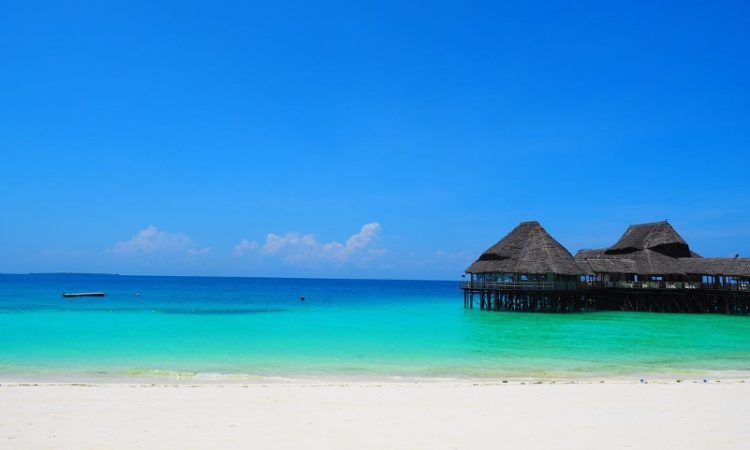10 Things You Don’t Know About Zanzibar : African Adventures loves Zanzibar! Zanzibar is a wonderful location for an African holiday trip because of its clear waters, sandy beaches, incredible wildlife, and diverse culture. During your Zanzibar holiday trip you will enjoy discovering this undiscovered region of the world. Zanzibar is the perfect destination for visitors from climbing Mount Kilimanjaro, Mountain gorilla trekking in Uganda and Rwanda or wildlife game drive in Serengeti, Ngorongoro and Maasai mara national reserve. If reading this hasn’t convinced you to get your passport and go to the airport, here are 10 things you might not know about Zanzibar:

- Zanzibar is not just one island.
The idea that Zanzibar is just one island is widespread. In actuality, it is a collection of islands in the Indian Ocean. There are several smaller islands as well as two bigger ones, including Unguja (also called Zanzibar informally) and Pemba Island. Mafia Island, which is a part of Tanzania’s Mafia Archipelago, is located further south. About 1 million people call Zanzibar their home.
- There are some rare creatures on the islands.
The red colobus monkey, the Zanzibar servaline genet, and the Zanzibar leopard can all be found in Zanzibar. The red colobus monkey is a species that is in danger of extinction, and its numbers are still dwindling. Unlike the Zanzibar leopard, another critically endangered animal on Zanzibar, these amazing primates are typically found in the Jozani Forest. Experts have previously claimed that there are no Zanzibar leopards on the island, but possible sightings in recent years have given people new hope that the population is still alive.
The Zanzibar servaline genet is another rare animal that lives in Unguja. These feline-like creatures were first identified in the 1990s, and they were first captured on camera in 2003. Prior to its discovery by zoologists, the servaline genet was well known to the local population. However, scientists have only recently classified these animals. The long tails of the genet are ringed with bands of black and light-colored fur, and they have distinctive black spots on tan-colored fur. In Zanzibar, there are no lions, elephants, or giraffes. While these animals can be seen on safari on Tanzania’s main island, the wildlife of Zanzibar is more beautiful underwater, with some stunning coral and fantastic snorkeling opportunities.
- The capital of Zanzibar is not Stone Town.
Many people mistakenly believe that Stone Town serves as Zanzibar’s capital. In reality, Stone Town is located in Zanzibar City, which serves as the country’s capital. With its winding streets, coral stone structures, and spice markets, Stone Town is unquestionably a must-see when traveling to Zanzibar. These features combine to make the city a focal point of Zanzibari culture. The intricate wooden carvings on the doors of the majority of the city’s buildings are what make Stone Town, a UNESCO World Heritage Site, so renowned. The carvings’ subtle differences in style reflect social class, ethnicity, and religion; some of the designs incorporate Quranic verses.
- Although there are two rainy seasons in Zanzibar, most of the year is warm there.
Zanzibar has 12-hour days and 12-hour nights, just like the majority of East African nations that are located close to the equator. Its two rainy seasons are divided into short and long seasons; the short rainy season takes place in November and December, while the long rainy season lasts from March to May. However, Zanzibar is known for its hot summers and clear skies, which enable visitors to take advantage of the island’s stunning sandy beaches.
- Zanzibar is famous for its spices.
Spice farming is a significant contributor to Zanzibar’s economy, second only to tourism. Because cloves, nutmeg, cinnamon, and black pepper are grown there, the islands are also known as the Spice Islands. With Zanzibar Safari tour, you can experience the sights, sounds, and flavors of the spice farms while exploring Stone Town and learning about Zanzibari culture.
- Freddie Mercury, the lead singer of Queen, was born in Zanzibar.
Farroukh Bulsara, better known as Freddie Mercury, is one of the best-known musicians in the world. He was born in Zanzibar in 1946. Following 15 studio albums and unprecedented global success, the charismatic performer and the other members of Queen were inducted into the Rock and Roll Hall of Fame in 2001. In and around Stone Town, there are numerous memorials to Freddie Mercury, and Queen Fans throng to Zanzibar’s Shangani district, where he was raised.

- Islam is the dominant religion on the island.
The majority of people are Muslims, and many people practice Islam. There are many mosques on the island, with the Kizimkazi mosque in Dimbani on the main island being one of the oldest. Zanzibar has a small Christian minority, and the cathedral in Stone Town, which underwent renovations in 2016 at a cost of €1,000,000, is a notable landmark.
- The main language is Swahili.
Although English and Arabic are widely spoken in Zanzibar, Swahili is the official language. French and Italian, as well as other European languages, are also spoken throughout Zanzibar. In nations like Kenya, Tanzania, the Democratic Republic of the Congo, Rwanda, and Uganda, Swahili is widely spoken. The word “Swahili” is derived from the Arabic word sawahil, which means “coast” in English.
- Union Day is a national holiday.
Tanzania and Zanzibar commemorate the creation of modern-day Tanzania on April 26 by celebrating the union of Tanganyika and Zanzibar on that date in 1964. Politicians typically give patriotic speeches on this day, and schoolchildren and local organizations parade throughout Tanzania and Zanzibar.
- The current flag of Zanzibar was adopted in 2005.
The current flag of Zanzibar is only 18 years old. The inclusion of the Tanzanian flag in the top corner balances out the three horizontal lines of blue, black, and green. Zanzibar previously utilized the Tanzanian flag, which was adopted in 1964. Prior to this time, Zanzibar’s flag resembled the current design very closely, but it did not include the Tanzanian flag in the corner. Since 1856, Zanzibar has flown six distinct national flags. Three horizontal stripes of black, yellow, and blue made up the region’s former flag, which was flown for 17 days in January 1964.


